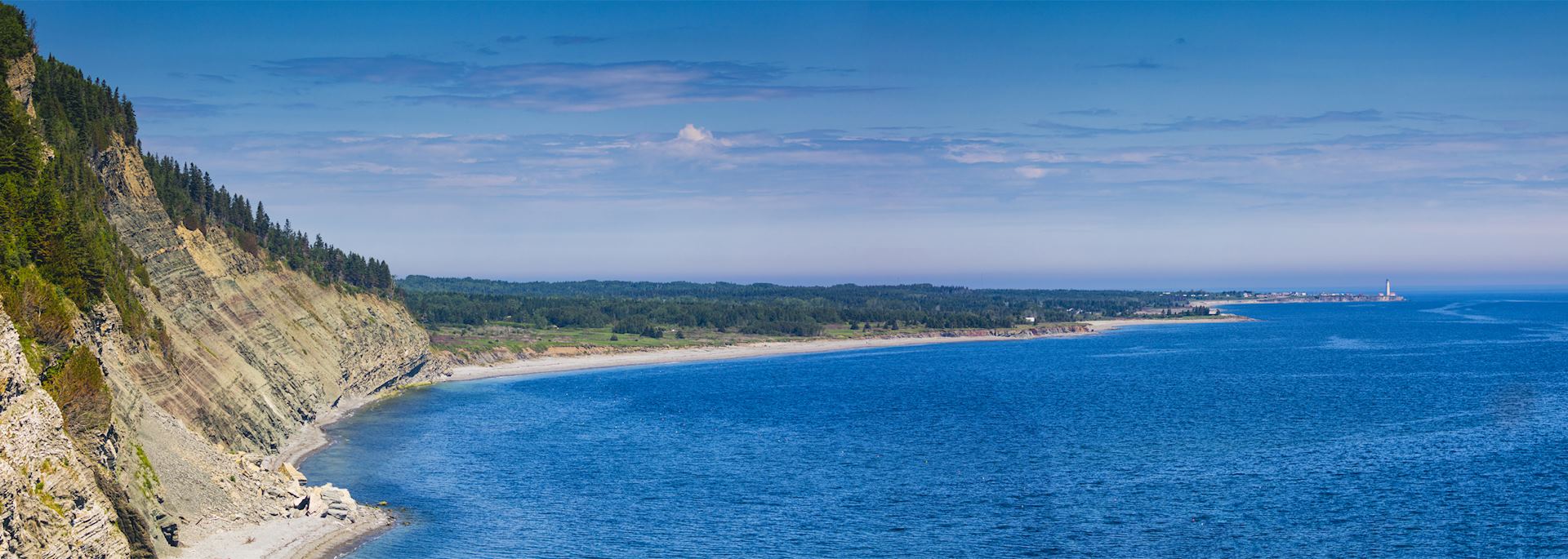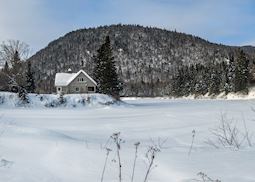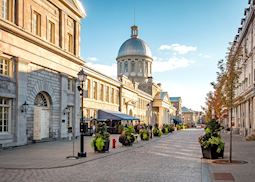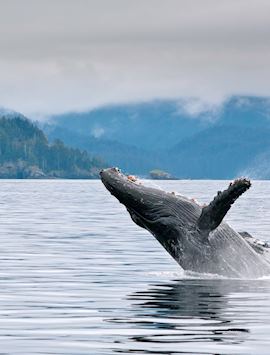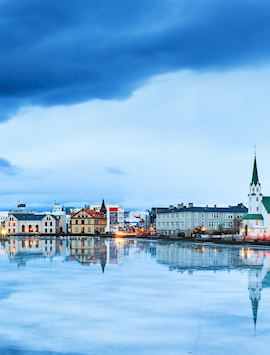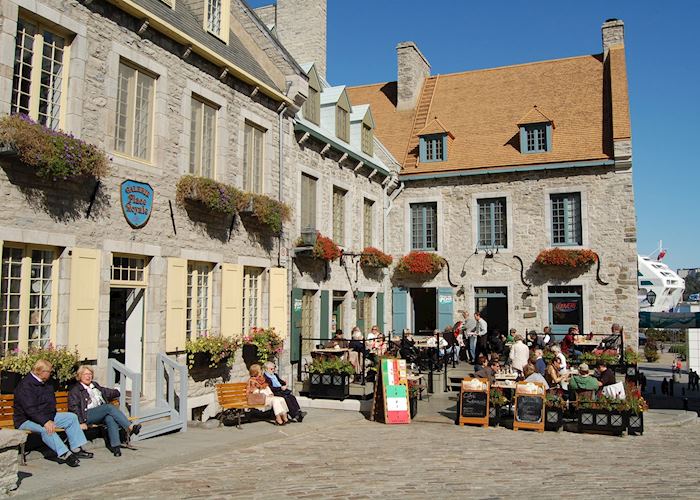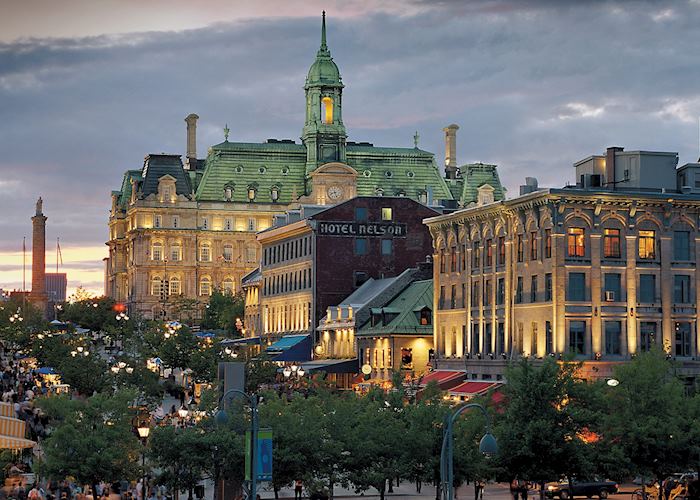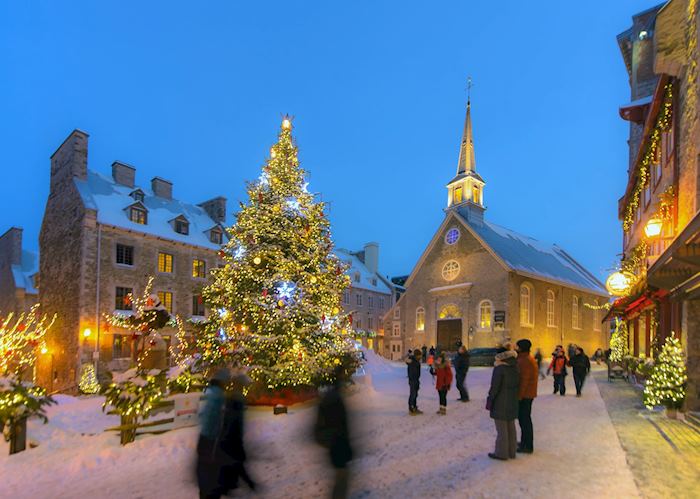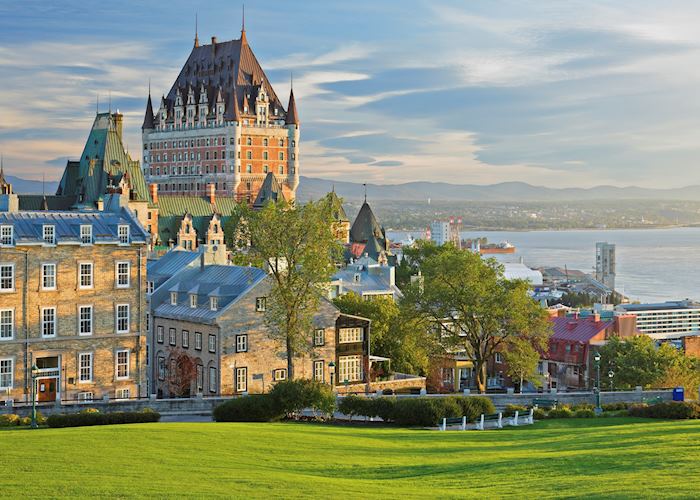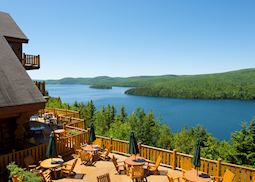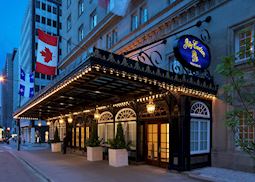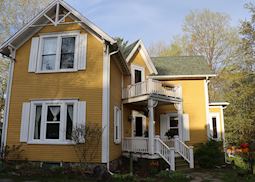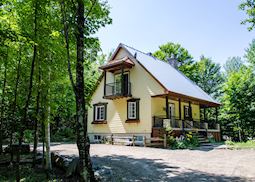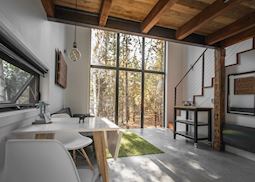Jump to:
Canada’s French-language heartland is an intriguing mix of old-world Europe and nature on a North American scale with vast mountain ranges, rivers and lakes. Its flagship cities — Québec City and Montréal — are good places to start. Beyond them lie boreal forest, gently sloping valleys, one of the world’s longest natural waterways (the Saguenay Fjord) and the craggy Gaspé Peninsula. Here, mountain peaks plunge straight to the sea, and you’ll stop at villages where locals greet you in a rustic Québécois patois. Our Canada specialists have journeyed and researched their way around this largely overlooked region, and they’ll use this experience to create your own Québec trip.
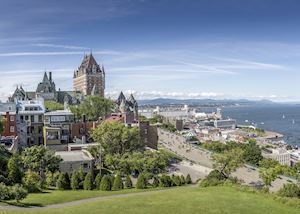 One of the great delights of touring Québec is discovering its Gallic-influenced gourmet produce. Our specialists can point you in the direction of artisanal cheeses, pâtés and chocolates in Charlevoix and La Malbaie. They’ll recommend the best walking tours for getting to know Québec City’s architecture, or the most rewarding walking trails in the forests and lakes of the Laurentian Mountains. You could look for moose in the mountainous Mastigouche Wildlife Reserve or beluga whales off Tadoussac. And, if you’re especially interested in the province’s European cultural heritage, you could explore the mansions and craft traditions of the Eastern Townships, whose inhabitants speak French but historically supported the British Crown.
One of the great delights of touring Québec is discovering its Gallic-influenced gourmet produce. Our specialists can point you in the direction of artisanal cheeses, pâtés and chocolates in Charlevoix and La Malbaie. They’ll recommend the best walking tours for getting to know Québec City’s architecture, or the most rewarding walking trails in the forests and lakes of the Laurentian Mountains. You could look for moose in the mountainous Mastigouche Wildlife Reserve or beluga whales off Tadoussac. And, if you’re especially interested in the province’s European cultural heritage, you could explore the mansions and craft traditions of the Eastern Townships, whose inhabitants speak French but historically supported the British Crown.
who's been there
-
617-223-4521617-223-4583
- Make an inquiry
Places to visit in Québec
Featuring heavily on our experiences of visiting Québec, these selected places are destinations that also prove consistently popular with our travelers. Our specialists can help you choose how to include them in your wider trip, based on your preferences.
Suggested itineraries featuring Québec
Our itineraries will give you suggestions for what is possible when you travel in Québec, and they showcase routes we know work particularly well. Treat them as inspiration, because your trip will be created uniquely by one of our specialists.
Places in and around Québec
- Anticosti Island Québec
- Charlevoix & Saguenay - Lac St. Jean Québec
- Eastern Townships Québec
- The Gaspé Peninsula Québec
- Îles de la Madeleine Québec
- La Malbaie Québec
- Laurentian Mountains Québec
- Mastigouche Wildlife Reserve Québec
- Montréal Québec
- Mont-Tremblant Québec
- Québec City Québec
Photos of Québec
Our expert guides to exploring Québec
Written by our specialists from their own experiences of visiting Québec, these guides will help you make the most of your time there. We share both our practical recommendations and the best ways to appreciate Québec at its best.
-
Highlights of Québec: La Belle Province ![Québec City, Québec]()
Highlights of Québec: La Belle Province
Highlights of Québec: La Belle Province
With a character that’s distinct from the rest of Canada due to its French influences, Québec feels like its own country. Here, Canada specialist Jon shares what to see and do in the province, from historic cities to sleepy villages and whale-rich fjords.
Read this guide -
Canada self-drive vacations: Ontario and Québec ![Algonquin Provincial Park]()
Canada self-drive vacations: Ontario and Québec
Canada self-drive vacations: Ontario and Québec
By self-driving in Canada’s Ontario and Québec provinces, you can explore peaceful parks filled with wildlife, secluded towns and villages, and multicultural cities at your own pace. Canada specialist Rebecca shares her ideas for self-drive routes that take in the best of each province.
Read this guide -
Self-drive vacations in Canada ![Jasper National Park]()
Self-drive vacations in Canada
Self-drive vacations in Canada
Whether you choose a route circuiting western Canada’s renowned mountains, glaciers and lakes, or you’d rather go off-grid exploring the traditional fishing villages and coastal drives of the Maritimes, Canada’s well-maintained, easily navigable roads make it an excellent self-drive destination.
Read this guide
Accommodation choices for Québec
We've selected a range of accommodation options for when you visit Québec. Our choices usually come recommended for their character, facilities and service or location. Our specialists always aim to suggest properties that match your preferences.
-
![Hotel Sacacomie summer terrace]()
Hôtel Sacacomie
Laurentian Mountains -
![Hotel Manoir Belle Plage, Carleton-sur-Mer]()
Manoir Belle Plage
Gaspé Peninsula -
![Convent, Val Jalbert Village Historique, near Chambord]()
Val Jalbert Village Historique
Charlevoix & Saguenay - Lac St. Jean -
![Guest room, Hotel Quintessence]()
Hôtel Quintessence
Mont-Tremblant -
![Fairmont Le Chateau Frontenac, Québec City]()
Fairmont Le Chateau Frontenac
Québec City -
![Auberge Saint Antoine, Québec City]()
Auberge Saint-Antoine
Québec City -
![Superior room, Le Saint-Pierre Auberge Distinctive, Québec City]()
Auberge Saint Pierre
Québec City -
![Hotel Manoir Victoria, Québec City]()
Hotel Manoir Victoria
Québec City -
![Le Saint-Sulpice Hotel, Montréal]()
Le Saint-Sulpice Hotel
Montréal -
![The Ritz Carlton, Montréal]()
The Ritz-Carlton Montréal
Montréal -
![Hotel Le Cantlie Suites, Montréal]()
Hotel Le Cantlie Suites
Montréal -
![A L'Ancestrale B&B exterior, Magog]()
À L'Ancestrale B&B
Québec -
![Chalet exterior, Natur'Eau Spa and Chalets, Mandeville]()
Natur'Eau Spa and Chalets
Québec -
![Mashk unit interior, Repere Boreal, Les Eboulements]()
Repère Boréal
Québec
